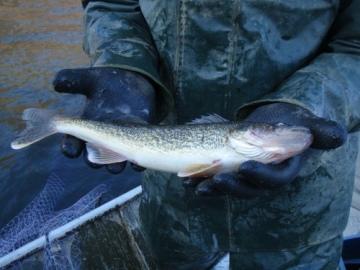
Section Branding
Header Content
Brunswick Fish Advisories Consolidated
Primary Content

A multi-agency partnership has come together to make fish advisories easier to understand.
The effort in coastal Glynn County is aimed at protecting Georgians from water pollution.
Eating fish is good for your health, but some fish in some amounts may be toxic.
That's why at least a half dozen agencies have advice on the topic.
The state Environmental Protection Division lists how much to eat by species for just about every Georgia river.
But Daniel Parshley of the Glynn Environmental Coalition says, the advice is too complicated.
"The information was in voluminous books," Parshley says. "There were many different advisories. And how they were described, most people didn't even know. It was just all broken up."
Gary Hummel of the Coastal Health District says, state officials produce a hard-to-understand 60 page book on the topic.
"It goes through the entire state, so every waterway in the state is listed," Hummel says. "So, it's cumbersome. For someone to pick it up and just go through it and understand everything, in my opinion, it would be difficult."
The coalition and five public agency partners now have produced a single-page pamphlet for waterways in Glynn County, home to four federal Superfund sites.
The safe fish campaign also is paying for a public outreach coordinator. to spread the word at local fishing sites.
The campaign is a partnership between the Coastal Health District (Glynn County Health Department), the Georgia Department of Natural Resources (Coastal Resources Division), the Georgia Environmental Protection Division (Environmental Toxicology Program), the University of Georgia (Marine Extension Service), the Georgia Sea Grant program and the Glynn Environmental Coalition.
The program is funded by the Savannah Presbytery (M.K. Pentecost Ecology Fund) with additional help from the Glynn County Health Department.
The comprehensive Environmental Protection Division guidelines for fish consumption are found at this website.
The pamphlets for Glynn County produced by the Safe Seafood Coalition are available from the Glynn Environmental Coalition in English and in Spanish.
Tags: coast, fishing, Environmental Protection Division, Glynn County, University of Georgia, Department of Natural Resources, Brunswick, Georgia Department of Natural Resources, Georgia Environmental Protection Division, Coastal, fish, coastal Georgia, water pollution, Coastal Resources Division, GPB News, toxicology, Atlantic coast, Superfund site, fishing in Georgia, EPA Superfund List, subsistance fishing, Coastal Health District, Georgia Dept. of Natural Resources, anglers, fishermen, Glynn Environmental Coalition, Daniel Parshley, Gary Hummel, Glynn County Health Department, Marine Extension Service, Georgia Sea Grant, Savannah Presbytery, Wildlife Resource Division
Bottom Content

